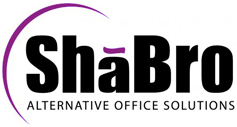
Table of contents
Getting the most out of managing remote employees post COVID-19
Working remotely – and your expectations of managing remote employees – is critical because of the way the pandemic changed how and where we work. Companies who are allowing employees to work away from a live and active office setting are getting results through good communication and listening, providing guidelines and boundaries, short virtual huddles instead of long, lengthy meetings, avoiding the temptation to micro-manage and providing tools that allow for effective feedback.
Communication can make or break a remote relationship
Never has it been more important to establish a communication plan that best fits the employee and company. Good conversation builds on employee confidence by keeping them up to date on deadlines, the managers’ expectations, work-related challenges, and resources available to minimize those challenges. Establish the best ways to communicate whether it is by email, texts, video chats, phone calls or an intranet channel. Supervisors should also focus on being good listeners because it helps build trust and respect within the workplace and creates confidence among employees that they are being heard.
Creating guidelines and boundaries
Employees should be encouraged to provide work schedules and tasks that are to be completed within a specific time. This helps create structure within the organization and gives the employee ownership into the operations of the business. Guidelines and boundaries also assist in building a structured environment and aids in establishing consistency. Also provide clarity on goals, priorities and milestones. Always outline work expectations and talk with employees about their roles, responsibilities, quality workmanship.
Time is money
The standard 9 to 5 workday is a thing of the past. When managing remote employees, the employees want flexible work hours at a time when life’s challenges can become overwhelming. This also applies to meetings. What once worked in the office may not work in a remote environment. Avoid lengthy meetings and encourage much shorter virtual huddles by sticking to a clear agenda. Schedule non-meeting days for the team so work can get accomplished.
Feedback is crucial
Make sure employees have the opportunity to provide advice or suggestions that could lead to a more interactive culture and improved productivity. Create a tip sheet or even a video with remote employee suggestions. Share positive feedback and consider a fun chat channel. Celebrate successes – even virtually. Employees love to be recognized for good work that elevates a company’s success. Some companies are using videos to celebrate workers’ achievements.
Technology also plays a big role
Remote employees will need the same access to information available in an office setting. Calendars, phone lists, other company resources should be accessible by everyone. Companies should look at investing in file-sharing software, remote access software, video conferencing options and communication apps like Microsoft Teams or Slack. You don’t need to overspend on technology. Simpler options like FaceTime or Skype are easily available for small, informal chats, while Zoom can be used for larger gatherings. ShaBro Alternative Office Solutions offers a valuable tool called Office On The Go, which gives clients true mobility on almost any device anywhere in the world, providing proprietary and commercially available software with full access to programs and data.
Best is yet to come
Because the environment is so new, the book is literally being written each day on how to best manage remote employees, but the three keys to sustained success remain:
- Communication
- Managing expectations
- Employee feedback
For more tips on managing remote employees, go to www.insperity.com/blog/managing-remote-employees/
Contact ShaBro Alternative Office Solutions to help with building an effective and affordable plan for managing employees remotely.

